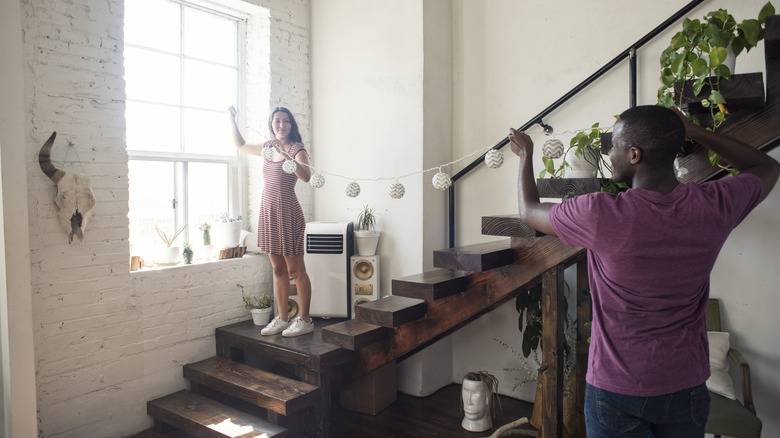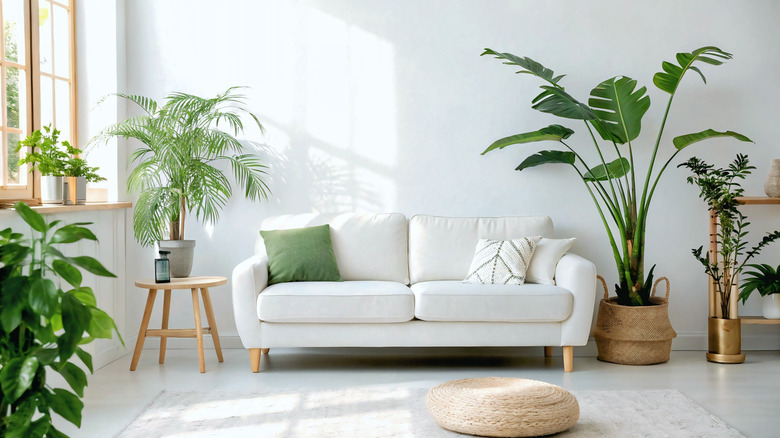We Hate To Tell You That This Lively Decor Is Way Outdated
The real versus fake plant debate has raged for decades. Those who love natural plants point to their beauty and the health benefits of having plants in your homes. Others without the time or desire to care for indoor plants insist that faux plants are a suitable alternative to enjoy the look of nature without the upkeep. We hate to tell you that this lively decor is way outdated for aesthetic, health, and environmental reasons.
The use of fake plants dates back to antiquity when people in ancient Egypt painted plants and leaves on textiles. The widespread use of artificial plants and flowers came about in the 1950s with the development of plastics and other synthetic materials. For a couple of decades, fake plants were extremely popular, until they fell out of style in the 1980s and '90s. In the 2000s, they became popular again with the advancement of materials and manufacturing methods to create more natural-looking products.
Although fake plants have improved in quality in recent years and some look close to natural plants, many remain low quality, and the ones that look the best cost the most. Less expensive artificial plants look cheap and tacky. Consider that you should never put fake plants on display for an open house due to the negative impression faux plants create in the minds of potential buyers. Fake plants can indicate that the house is not well cared for and that you can't keep real plants alive. While artificial greenery doesn't require the care needed for real plants, fake plants get dusty, contributing to the poor first impression of your home. Plus, cleaning them isn't easy.
Bring nature indoors with real plants instead
In addition to aesthetics, there are environmental concerns about the use of artificial plants in the manufacturing process and disposal. Faux plants are manufactured using petroleum-based plastics and emit volatile organic compounds (VOCs) that pose a risk to human health. The manufacturing process uses a lot of energy and creates pollution. When these plants are no longer useful, disposing them contributes to plastic waste in landfills.
Not only are faux plants outdated, but plastic also won't offer the natural beauty or health benefits of having real plants in your home, a much better alternative. They can help reduce stress levels, improve attention, boost productivity, and provide therapeutic benefits to people suffering from anxiety, depression, and other mental health conditions. When selecting natural plants for your home, consider houseplants that are perfect for growing indoors.
The best plants for indoor use don't require constant sunlight, and many are low maintenance. Some plants that tolerate low light and don't require excessive maintenance include the snake plant, spider plant, peace lily, pothos, jade plant, philodendron, and string of pearls. When choosing plants for your home, consider the amount of natural light various rooms in the house get during the day, the available space, and the amount of maintenance required to find the perfect plants for any room in the house.

